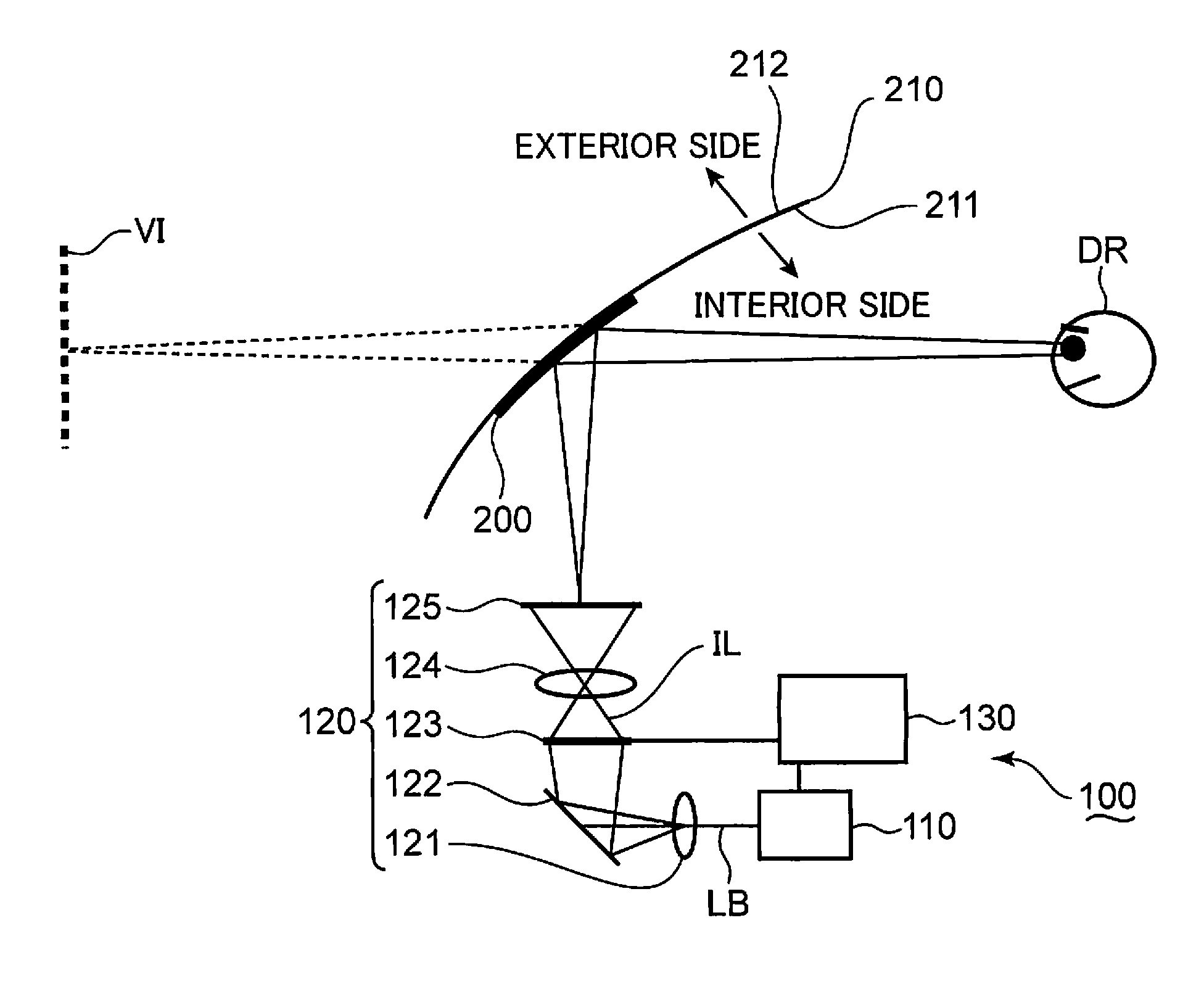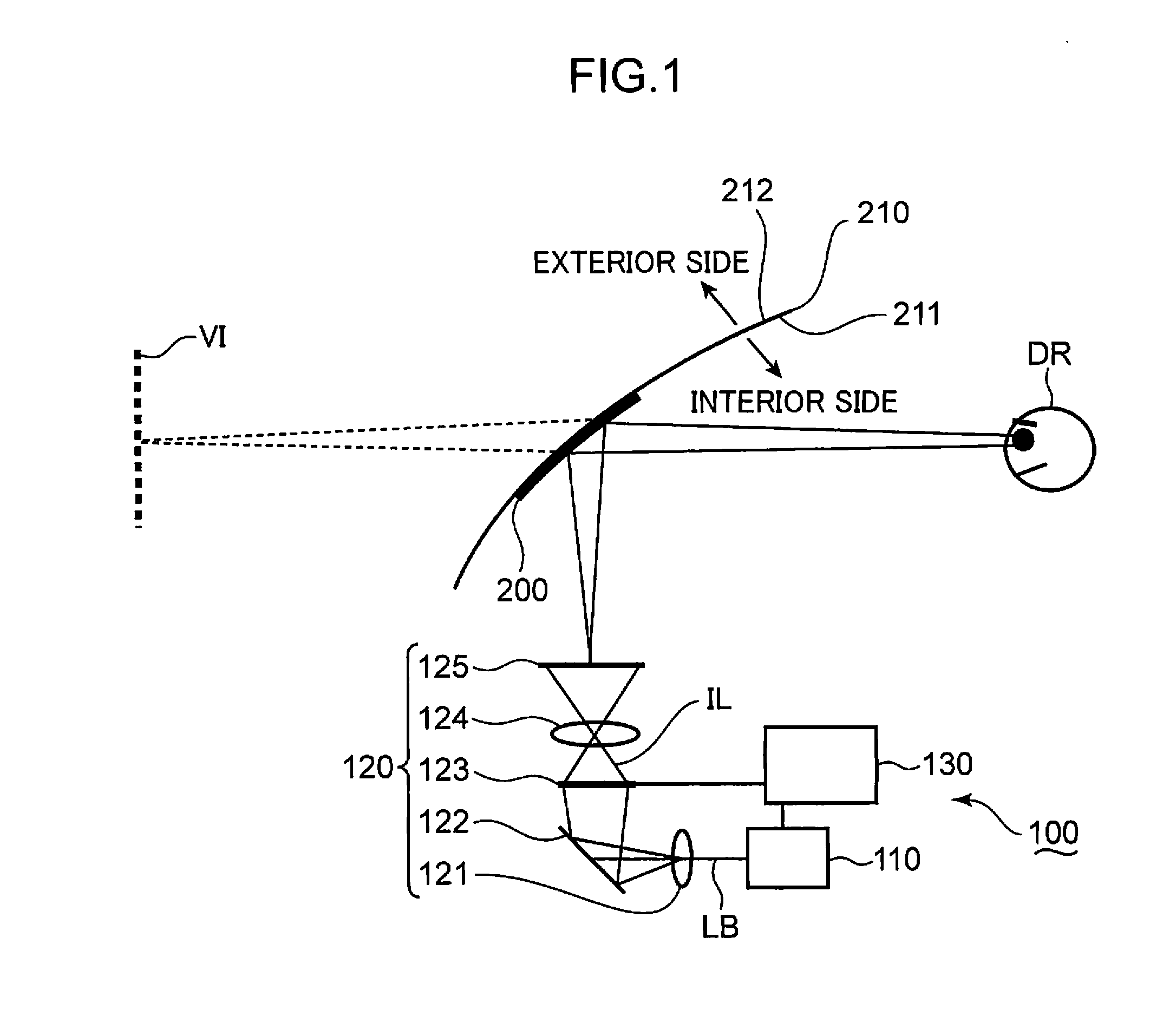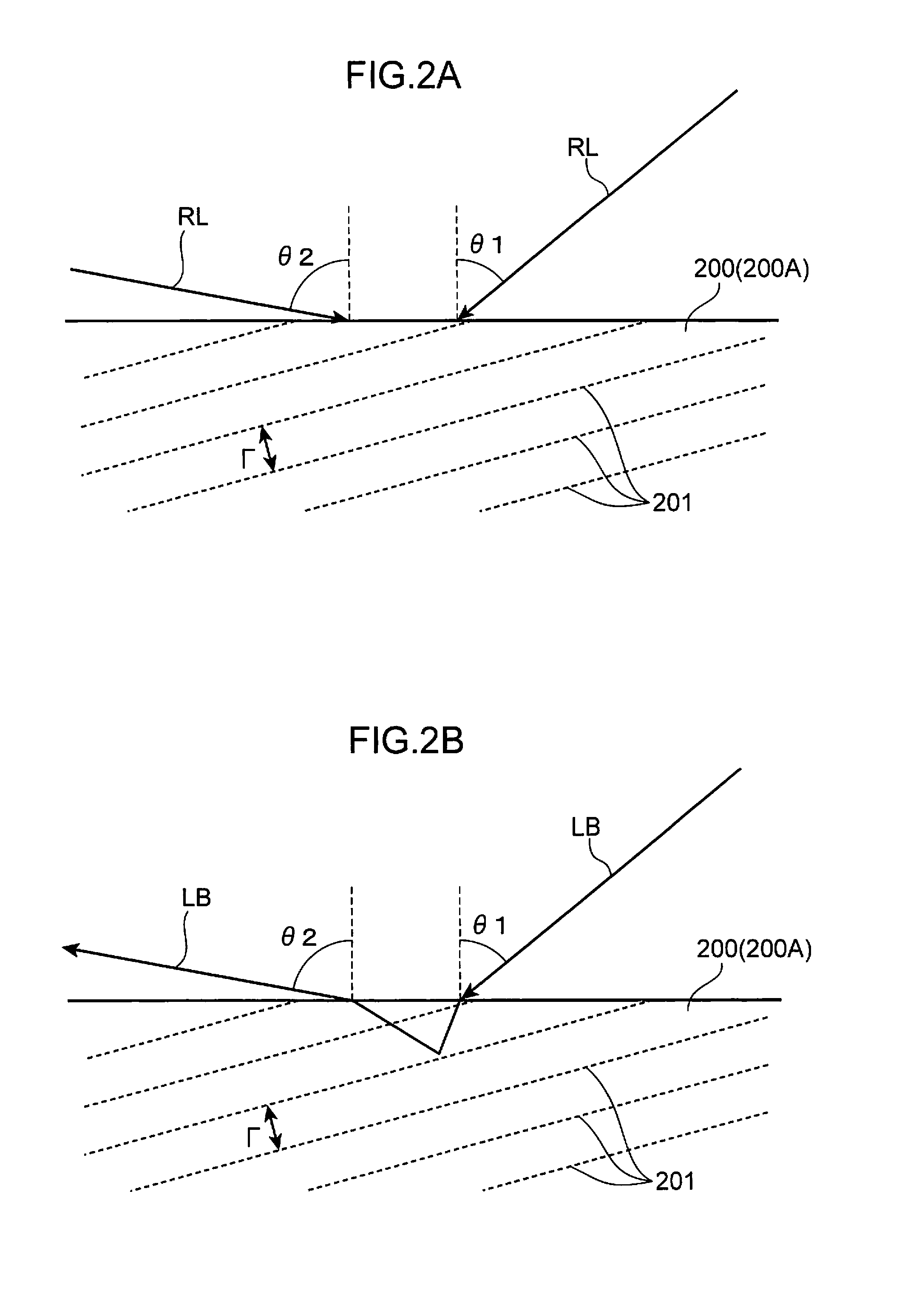See-through display and head-up display
a display and head-up technology, applied in the field of see-through display, can solve the problems of irregular luminance distribution and color distribution in the image, hmd may consume little power to provide a user with large images,
- Summary
- Abstract
- Description
- Claims
- Application Information
AI Technical Summary
Benefits of technology
Problems solved by technology
Method used
Image
Examples
first embodiment
[0051]FIG. 1 is a schematic view of a head-up display (hereafter abbreviated as “HUD”) exemplified as a see-through display according to the first embodiment. The head-up display is described with reference to FIG. 1.
(Configuration of Head-Up Display)
[0052]The HUD 100 schematically shown in FIG. 1 is mounted, for example, on an automobile. An automobile windshield 210 is shown in FIG. 1. The windshield 210 has an inner surface 211 defining an inner boundary of the automobile cabin and an outer surface 212 opposite to the inner surface 211.
[0053]The HUD 100 has a laser source 110 which emits a laser beam LB, a projection optical system 120 which projects the laser beam LB emitted by the laser source 110, and a volume hologram 200 which is attached on the inner surface 211 of the windshield 210. The projection optical system 120 has a lens 121, a return mirror 122, a liquid crystal panel 123, a projection lens 124, and a screen 125. In this embodiment, the laser source 110 is exemplif...
second embodiment
[0166]FIG. 13 is a schematic view of an HUD exemplified as a see-through display according to the second embodiment. The HUD is described with reference to FIGS. 4 and 13.
[0167]The HUD 300 according to the second embodiment has the controller 130A, the dichroic mirrors 151,152, and the projection optical system 120, like the HUD 100A described with reference to FIG. 4. The HUD 300 also comprises a light source 350 including a red wavelength conversion laser source 310R, a green wavelength conversion laser source 310G and a blue wavelength conversion laser source 310B, and a volume hologram 320 attached to the inner surface 211 of the windshield 210. The red, green and blue wavelength conversion laser sources 310R, 310G, 310B are electrically connected to the controller 130A and operated under the control of the controller 130A.
[0168]The red wavelength conversion laser source 310R converts fundamental waves into higher harmonic waves by means of a wavelength conversion element to emi...
third embodiment
[0199]Although the temperature dependency of light wavelength emitted by the light source is taken into consideration in the principles of the first embodiment, the principles of the present embodiment are applicable without any limitation to the temperature dependency of the light emitted by a light source.
[0200]FIG. 16 is a schematic view of an HUD exemplified as a see-through display according to the third embodiment. The HUD is described with reference to FIGS. 4 and 16.
[0201]The HUD 400 according to the third embodiment comprises the dichroic mirrors 151,152, the projection optical system 120 and the volume hologram 200A, like the HUD 100A shown in FIG. 4. The HUD 400 further comprises a light source 450 including a red laser source 410R, a green laser source 410G and a blue laser source 410B, and a controller 430. The controller 430 is electrically connected to the liquid crystal panel 123, the red, green and blue laser sources 410R, 410G, 410B. The liquid crystal panel 123, t...
PUM
 Login to View More
Login to View More Abstract
Description
Claims
Application Information
 Login to View More
Login to View More - R&D
- Intellectual Property
- Life Sciences
- Materials
- Tech Scout
- Unparalleled Data Quality
- Higher Quality Content
- 60% Fewer Hallucinations
Browse by: Latest US Patents, China's latest patents, Technical Efficacy Thesaurus, Application Domain, Technology Topic, Popular Technical Reports.
© 2025 PatSnap. All rights reserved.Legal|Privacy policy|Modern Slavery Act Transparency Statement|Sitemap|About US| Contact US: help@patsnap.com



